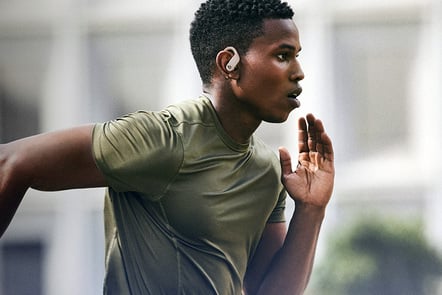New York, NY (Top40 Charts) For most athletes and just amateurs who run, ride or lift weights, choosing the "right" music determines the effectiveness of training and the level of pleasure from it. There are, of course, cases when a person prefers to listen to audiobooks or lessons, but such cases are rare. Students also prefer to listen to music while doing some monotonous tasks, they also use
Essay Assistant to maximize the results when writing essays.
Some songs can lift the mood and improve the production of endorphins, which improves the quality of training and its emotional background.
Music with a certain speed can increase the speed of movement.
The very first studies of this issue date back to 1911, when the American scientist Leonard Ayres found that cyclists rode faster when music was playing than when they rode in complete silence. Of course, this phenomenon was immediately adopted by the coaches of professional athletes.
One of the most important qualities of music that affects the effectiveness of physical activity is tempo - or speed. Most people intuitively synchronize their movements and expressions with music- to nod their heads, stamp their feet, or even dance. What kind of music makes us do this varies depending on the culture of the nationality and the personality of the person. To summarize, fast songs with a strong, expressive beat (drummer) are always a stimulant and are present in the playlists of most people.
Surveys conducted recently among students showed that the most popular styles of music for training were Hip-hop (27.7 percent), Rock (24 percent), and Pop (20.3 percent). Scientists have also found that stimulation best occurs at a frequency of two hertz, which is equivalent to 120 beats per minute, or two beats per second. And about 74,000 of the most popular songs that people download for training have exactly this pace.
The answer is in our brain
Recent studies make it clear that music not only gives an impulse to training but also motivates them to give their best during classes. Distraction is one explanation. The human body constantly "monitors" itself. And after a certain time (depending on the person and the intensity of the workout), muscle fatigue sets in. The body receives an overload signal (increased lactate levels in the muscles, palpitations, sweating) and decides that it needs rest. Music "competes" with the signal that is supplied by our brain.
Paradoxically, but the fact is that thanks to music, people subconsciously change their vision of training. It's much easier to lift a heavy barbell when (thanks to the music and the volume level) it seems to you that Till Lindemann (Rammstein) is singing right next to you. How can you be a weakling at such a moment?!
Music also affects the emotional state, which is crucial during intense workouts.
Certain songs are associated with moments of joy or happiness, and listening to them opens up emotional channels, helping a person to reach their potential.
If we analyze the audience of gyms, we will see the following picture - about 80% of men train only to heavy rock, while 80% of girls asked to put "something lighter and quieter, for example, Rihanna.
The answer lies in the differences in upbringing. It's no secret that boys are raised strong, strong-willed. If you take rock music, especially the words of many songs and the timbre of the performers' voices, then these concepts are intertwined. We associate our masculinity with rock music - heavy, unpredictable, audacious, a little aggression also does not hurt!
At the same time, girls are brought up in a completely different manner. Their life should be filled with harmony, joy, and simplicity - which is what all pop and hip-hop songs are built on.
Uncomplicated melodies from a couple of chords and a beautiful wrapper. Girls do not need to be tough and aggressive as often as men need it - accordingly, the sounds of heavy music cause them discomfort. Heavy rock makes them think about cruelty, and they don't accept it. At the same time, men need it - to always be ready to cope with this cruelty.
The influence of music on training. The anabolic effect of rock!
As soon as the first chords of heavy music begin to sound from your speakers, a powerful acoustic field is born around you. Yes, it is heavy music, but not any pop music! The fact is that the wave vibrations of rock music have a high intensity and strict synchronization, so they can easily pierce concrete walls 50 cm thick! Such sounds are not found in nature and, accordingly, nature has not endowed man with any adaptive mechanisms of protection against them. Thus, the fluid environment of the body, obeying certain physical laws, is also forced to obey externally imposed rhythms. The habitual vital activity of the organs is disrupted, however, the main changes occur in the brain.
Miraculous changes
What are these changes and are they harmful? Music is one of the few creations of man that did not harm him. Unlike the electromagnetic field, which arises, for example, from the operation of the TV, the acoustic music field acts exceptionally favorably. A good example is the effect of music on plants and animals. In developed countries, this issue has been studied for a long time and it has been proven that under the influence of certain music, vegetables and fruits grow faster and bear fruit better, and for example, the amount of milk in cows increases almost twice.
Back in the 70s, an interesting fact was noticed, the essence of which was that young person attending noisy rock concerts felt a big surge of sexuality after a couple of days. Later it turned out that this is the result of increased production of sexual hormones. Everyone knows that it is the hormone testosterone that is responsible for the growth of muscle mass. From this, we can draw, though not one hundred percent, but the conclusion: rock music is a means of stimulating muscle growth.
Indirect proof of this fact is the result of experiments with animals. In meat breeds, under the influence of an acoustic field, the gain was significantly greater than in those that were not exposed to this effect. Moreover, this gain was of muscle tissue, not fat!
But not all music has a positive effect on practicing sports. So, club and disco music can not only help but also vice versa - harm the athlete.
This is explained by the fact that the fast bass rhythm of such a musical style specifically affects the activity of the brain. The influence of such an acoustic field entails involuntary mini-muscle spasms, which in themselves, in principle, are not dangerous. However, this can cause serious injury when performing heavy exercises.
Slow, calm music or lyrical ballads will be good helpers at the stages of recovery, as they contribute to muscle relaxation.
In all these cases, music is a psychostimulating factor for athletes. An elementary example may even be singing the club anthem or the national anthem before going on the field with hockey players or football players.
Bodybuilders regard it as a factor of physiological impact. And the difference here is very fundamental. Therefore, the selection of training music should be approached very carefully.
The most effective styles
The variety of rock music is very great, but among all these styles, one can be distinguished that most effectively affects the process of muscle growth — this is the hard rock style. For power programs, the acoustic field of heavy metal is perfect. But, just listening to compositions of such genres in training will not be enough. For maximum effect, you need to create a playlist for yourself with approximately the same type of hits. Moreover, their uniformity should be expressed both in the tempo and in the mood of the composition itself.
Try not to choose those songs that have a strong effect on you emotionally. The general mood of your playlist should be professionally businesslike — the main purpose of musical accompaniment during training is not to enjoy music but to work better. If after 5-10 minutes of classes, you simply do not notice the sound of music, then the playlist is very well composed.
As for gyms, there is also mostly some kind of music, which is a kind of middle ground among various acoustic accompaniment options and therefore is ineffective. If you watch the training of professionals, then most of them train with headphones in their ears, listening to the music that suits their type of training in the best way…
A distinctive feature of rock music
Rock music has another distinctive feature that will benefit all bodybuilders. The peculiarity of this is the reduction of the pain threshold, which is a very useful factor for bodybuilding. According to statistics, in most cases, the athlete stops the exercise not from extreme fatigue, but from the fact that he feels unbearable pain in the working muscle. Attempts to overcome this pain by volitional effort may not give the desired result. Properly selected music, according to the pros, can add 2-3 more extreme repetitions to your approach! And this is a fact that should be taken seriously and music should be perceived as a methodical method of increasing the intensity of training.
Proper music activates the subconscious and many unconscious processes in our body that affect the level of anabolism and its speed. Therefore, go ahead, with a song for life, friends, and let's rock our muscles!
























